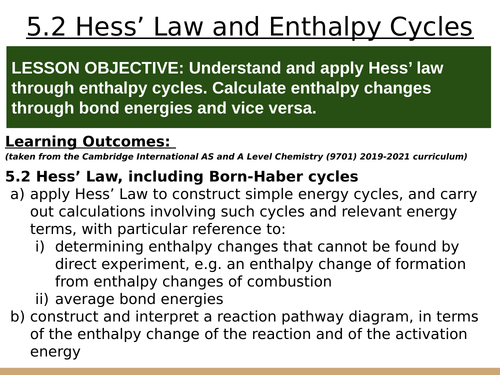


In this lesson we discuss the concept of Hess’ Law based on the first law of thermodynamics and how this can be used to create enthalpy cycles to determine unknown enthalpy changes. This is lesson seventeen in our physical chemistry series for Unit 5: Chemical Energetics (from the Cambridge International AS Chemistry Curriculum (9701) 2019-2021 curriculum).
LESSON OBJECTIVE: Understand and apply Hess’ law through enthalpy cycles. Calculate enthalpy changes through bond energies and vice versa.
LEARNING OUTCOMES (taken from the Cambridge International AS and A Level Chemistry (9701) 2019-2021 curriculum):
5.2 Hess’ Law, including Born-Haber cycles
a) apply Hess’ Law to construct simple energy cycles, and carry out calculations involving such cycles and relevant energy terms, with particular reference to:
i) determining enthalpy changes that cannot be found by direct experiment, e.g. an enthalpy change of formation from enthalpy changes of combustion
ii) average bond energies
b) construct and interpret a reaction pathway diagram, in terms of the enthalpy change of the reaction and of the activation energy
Something went wrong, please try again later.
This resource hasn't been reviewed yet
To ensure quality for our reviews, only customers who have downloaded this resource can review it
Report this resourceto let us know if it violates our terms and conditions.
Our customer service team will review your report and will be in touch.